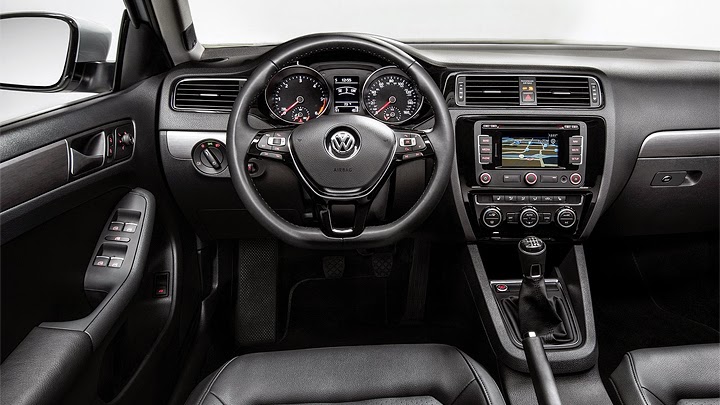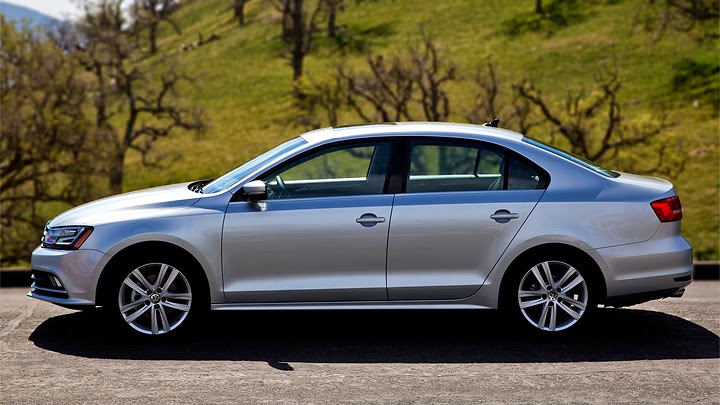
Even though the previous Jetta stuck to the formula of adding a protuberant trunk to the contemporary Golf and pretty much anything else, in that particular case this strategy ended in very different results. Both invested much on cutting-edge mechanics and sophisticated cabin, as to raise the overall quality to the level of more expensive vehicles. Such improvements did come with the expected price increase, but the hatchback managed to sell very well anyway because of its own traditions, which appeared as aspects like the sporty versions. When it comes to Jetta, in turn, the very same matter worked in the other way: while it became too expensive for its typical buyers in America, the Europeans wouldn’t take it because they don’t like sedans that much in this category.
This is what changed Volkswagen’s plans for the current generation. The new Jetta was projected to please North and South-American buyers, so its main features included being more detached of the Golf family than ever and using cheaper construction. People seem to have liked the first aspect, specially because it was expressed through a set of imponent lines that look much more solid. But who would like to buy a car that states its low-cost conception loud and clear? While the exterior differed so little between trims that any extra spent dollars could only be noticed at the sporty GLI, the cabin was freed of several minor items that, together, created the habitability standard which this public became used to expect from this category.










The bright side is that Volkswagen’s response came early. Jetta dropped the aging 2.5L engine in favor of a more modern turbocharged 1.8L, jumped in front of most competitors with the Hybrid version, and now welcomes the all-new Golf with a mid-life facelift. The interesting part is that it managed to stay far from both looking better and looking worse: the front fascia had the upper grille repainted as to look bigger while the lower one received a body-colored strip as to avoid looking too big; the sides feature new wheels, and the rear displays a whole new trunk lid, which gave new design to the license plate area and the tail lights’ central part. Despite listing that way makes them seem bigger, the truth is only a VW enthusiast would be able to notice these updates easily.
In other words, the Germans must have concluded that the problem was on working too much, whether for more or for less. So they decided to keep improving Jetta on whatever they could, but this time taking baby steps. This must be why the interior updates seem as neutral as the external: the seats got new fabrics, the console some piano-black accents, and the upscale trims ambient lighting and chrome rings for gauges and climate-control bezels. Safety, in turn, was enhanced with blind-spot monitoring, frontal-collision warning, park-distance control and rear cross-traffic alert, as optional items. The powertrain list didn’t touch the 115-hp 2.0L, the turbocharged 1.8L, GLI’s TSI 2.0L or the Hybrid’s 1.4L, but the TDI 2.0L became more powerful and fuel-efficient.
Lançamento no Brasil (25/02/2015)
No Brasil, pode-se observar que as menções mais recentes ao Jetta se dividiam em três grandes grupos: a vinda do facelift estreado pelos Estados Unidos no ano passado, a vinda do motor 1.4 TSI que aqui já equipa o Golf, e a sua montagem em solo nacional. Tudo isso era esperado para a linha nova, mas a Volkswagen decidiu efetivar somente um terço dos planos. Seu sedã médio continua vindo do México e continua utilizando o motor 2.0 de oito válvulas e 120 cv nas versões de entrada (a topo-de-linha Highline mantém o 2.0 TSI de 211 cv). No entanto, para manter sua estabilidade de vendas e permitir que ele ameace mais à concorrência, os alemães incluíram algumas melhorias de ordem técnico, mais equipamentos e uma nova versão de entrada, a Trendline.
Por fora, o estilo retocado se soma às rodas de liga leve que variam com a versão e ao novo azul Silk. Já a cabine recebe aros metálicos no quadro de instrumentos, saídas de ar retangulares, e uma variação simplificada do volante multifuncional do Golf. A suspensão traseira multilink agora vem em todas as versões, e usa calibração específica. Trendline (R$ 69.990) e Comfortline (R$ 73.990) sempre aliam o 2.0 8v a um câmbio automático de seis marchas, enquanto a Highline (R$ 93.990) usa um automatizado DSG com dupla embreagem e seis marchas. As duas últimas atrelam vários opcionais a pacotes, incluindo acesso sem chave, ar-condicionado digital bizona, central multimídia com GPS, aquecimento de bancos e farois bixenônio.